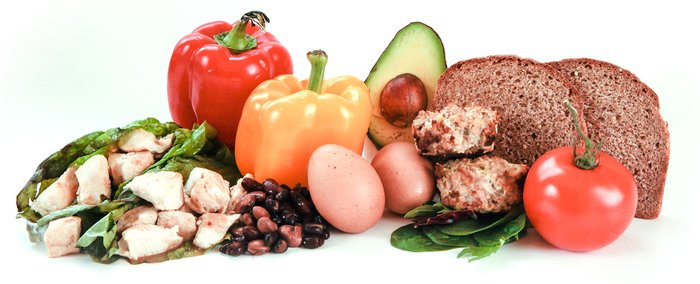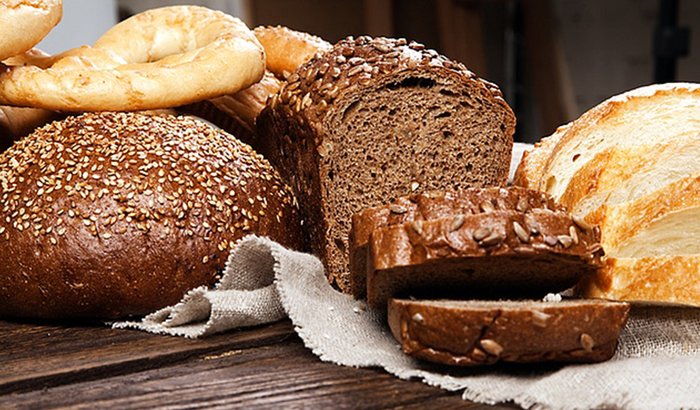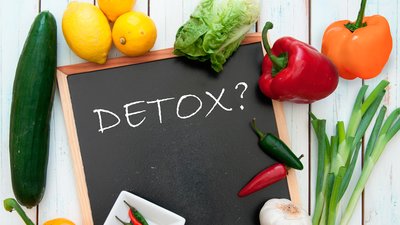Spend enough time talking about or searching for nutrition info online these days, and you'll quickly notice that it seems like everyone is an expert. Between blogs, social media, online message boards, and good old-fashioned conversations with friends, it's easy to get overwhelmed by competing opinions about what you should eat, how to eat it, and what to avoid. And all these opinions seem to be backed by some popular diet or book with a catchy title!
To make matters even more confusing, flying around in the middle of this dialogue are plenty of buzzwords that people toss around willy-nilly without fully understanding what they mean—if, in fact, they mean anything.
Well, it's time to shoot some flies and clear the air. Before you start a new diet or dive into your next big nutrition conversation, learn the truth behind common nutrition buzzwords, and determine for yourself if they have apply to your goals!
Buzzword 1: "Clean Eating"
Perhaps one of the most popular terms in the fitness and nutrition industry is "clean eating," but what exactly does "clean" mean? Ask five people at your gym to define clean eating, and you'll inevitably get five different responses.
In most cases, clean eating refers to eating as much whole, unprocessed food as possible, while limiting the amount of processed foods in your diet. Rather than focusing efforts on the number of calories you consume in a day, the focus is shifted to consuming food items that meet certain requirements—only unprocessed foods that contain no artificial ingredients, or eating foods that have zero added sugar, for example.

Clean eating has evolved into a seemingly cryptic, pie-in-the-sky way of eating within the fitness community. It's a diet of restriction that fails to honor personal food preferences, making it an unrealistic way of eating.
Clean eating has evolved into a seemingly cryptic, pie-in-the-sky way of eating within the fitness community. It's a diet of restriction that fails to honor personal food preferences, making it an unrealistic way of eating. As a registered dietitian, my goal is to promote sustainable nutrition practices through education and teaching. Rather than teaching an individual the importance of energy balance, eating clean enables one to subjectively label foods as "good foods" or "bad foods" without any consideration of overall dietary context.
Take, for example, processed foods, which are commonly banned in the diets of clean eaters. Processed food isn't inherently bad—many foods go through some sort of processing before they can be eaten. Milk and juices can be fortified with calcium and vitamin D to increase their nutritional value, as can some breakfast cereals. Canned fruit (packed in water) and precut veggies—both of which are technically considered "processed"—are great options for people who are constantly on the go.
Should these foods be banned outright from your diet? I certainly don't think so. Should they be labeled "bad," as if they're somehow nutritionally bankrupt? Again, I don't necessarily think so.
While clean eating—as defined in this way—may work for a select few, educating yourself on healthier food options without placing restrictions on your diet is a much more realistic way of eating. Plus, leaving out certain processed foods could cause you to miss out on important nutrients that keep your body in optimal health.
For even more insight on the nuances of clean eating, check out the article "What Does 'Eating Clean' Really Mean?" by Marie Spano, MS, RD.
Buzzword 2: "Detox"
Next time you're in the check-out line at the grocery store, take a look at the covers of popular fitness magazines. Chances are you'll see some advertisement or article about a short-term detox cleanse, usually promising to miraculously bolster your health and wellness in a matter of days by "ridding your body of toxins."
Let's think about this for a minute. What toxins are folks who begin a detox diet trying to flush out of their system? Are there specific chemicals they're trying to "clean out" by restricting themselves to a diet of tea and lemon water? The truth is, most individuals who go on a detox plan can't seem to name what specific toxins they're hoping to eradicate from their body in the first place.
Some will argue that a detox diet will flush out toxins that have accumulated in the body as a result of exposure to chemicals and additives in our food. However, the liver and kidneys both have the primary role of cleansing and detoxifying any waste products within the body. The human body is a self-cleansing, resilient system capable of eliminating harmful substances on its own.

The liver and kidneys both have the primary role of cleansing and detoxifying any waste products within the body. The human body is a self-cleansing, resilient system capable of eliminating harmful substances on its own.
Many cleanses and detox diets entail increasing fluids and limiting food choices to mostly fruits and vegetables. Since a detox diet typically involves calorie restriction, acute weight loss is often experienced. Additionally, an increase in fiber intake via increased fruit and vegetable consumption, coupled with the increase in fluids, may result in an increase in the frequency of your trips to the bathroom.
With that being said, the temporary weight loss individuals may experience after following a "detox diet" is mistaken as a perceived health benefit. It's usually just the result of short-term calorie restriction, not fewer "toxins."
In lieu of putting your body through all of this, shift your focus to making sustainable nutritious choices such as including more fruits, vegetables, and lean proteins into your diet so you can lose weight—and keep it off!—for the long haul.
Buzzword 3: "Low-Glycemic"
The glycemic index (GI) was originally developed for the treatment of diabetes. The GI ranks carbohydrate foods on a scale of 1-100 based on how quickly they affect blood sugar levels when consumed in isolation. Foods such as white potatoes and watermelon have a higher GI score, whereas slower-digesting carbohydrates like oatmeal and legumes have a lower GI score.
A common understanding in the fitness industry is that low-glycemic foods are "better" for you than high-glycemic foods because of the less dramatic insulin response. There are countless nutrition books and theories on controlling insulin response by only eating low-glycemic carbohydrate foods. Insulin has become one of the most feared hormones in the fitness industry.

Using the glycemic index to select which carbohydrate foods you chose to eat has limited practicality and application, which makes this a buzz phrase to watch out for.
What most individuals don't realize is that the glycemic index measures the insulin response of carbohydrates foodson a completely empty stomach in an isolated state. For example, white rice has a GI score of around 70. How often would you eat white rice, by itself, on an empty stomach? Pair that rice with a 4-ounce chicken breast and 1/2 cup green beans sautéed in a tablespoon of olive oil, and you drastically alter the entire glycemic response within that meal. For these reasons, the real-life application of the glycemic index is extremely limited.
Using the glycemic index to select which carbohydrate foods you chose to eat has limited practicality and application, which makes this a buzz phrase to watch out for. However, the glycemic index may be useful for individuals with diabetes, due to impairments in insulin production and metabolism.
Instead of just looking at GI, carbohydrate selection should be judged on the basis of nutrient density, grain and fiber composition, and personal preference.
Buzzword 4: IIFYM"
IIFYM stands for "if it fits your macros," an eating style that has gained a tremendous amount of attention over the past couple of years (thanks in large part to social media). IIFYM, also known as flexible dieting, is a buzz phrase that actually includes a great deal of practicality and sensibility—but it has to be applied appropriately.
Put simply, IIFYM is a system of tracking calories based on daily calorie, fat, protein, and carbohydrate targets. It allows you to take ownership of your daily food choices and overall dietary pattern and enables you to eat a diverse diet without restricting any specific foods.

The fact is, even if you follow IIFYM, you have to eat under a certain caloric target and meet your specific macro targets, so you don't get a license to eat whatever you want all the time.
When applied appropriately, IIFYM is a scientifically sound system of tracking your nutrition. Many folks, however, have mistaken IIFYM for an excuse to eat junk food such as donuts, pizza, and ice cream without any regard for nutrient density or food quality. Scan your social media feed and you will likely see your IIFYM friends sharing pictures of pies and ice cream with a hashtag endorsing IIFYM or flexible dieting. What you fail to see are the posts of fruits, vegetables, healthy fats, whole grains, and lean protein sources that probably make up the majority of those people's diets.
The fact is, even if you follow IIFYM, you have to eat under a certain caloric target and meet your specific macro targets, so you don't get a license to eat whatever you want all the time. You still have to follow a sort of 80/20 rule. In other words, 80 percent of your diet should be based on wholesome foods, while 20 percent of your diet could be used for favorite treats and indulgences.
Applied correctly, IIFYM enables you to:
- More freely enjoy social events when food is involved
- Develop and foster a healthy relationship with food
- Adjust daily macronutrient intakes with ease
- Grasp the concept of energy balance
IIFYM can be applied by people looking to lose weight, maintain weight, or even add muscle mass. Rather than rigidly excluding food groups and abandoning your social life in hopes of improving your body composition, IIFYM supports sustainability and feasibility.
Remember, the best diet to be on is one you can stay on, so IIFYM may be a great choice for you—but it's not a free pass to eat whatever you want, despite what some people may have you believe on social media.

